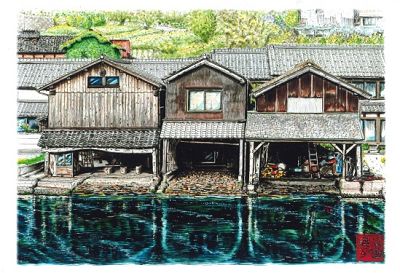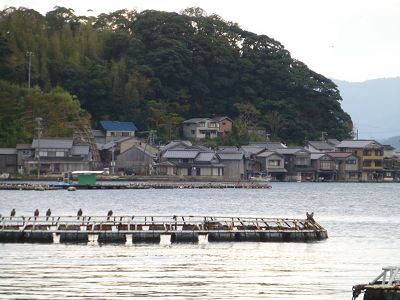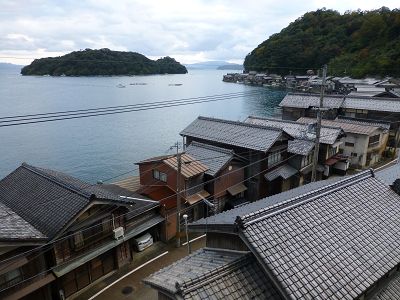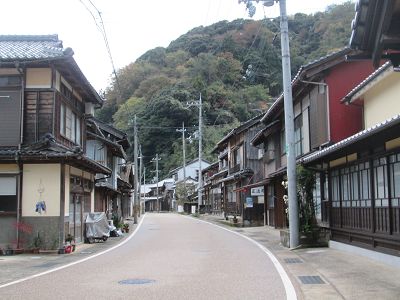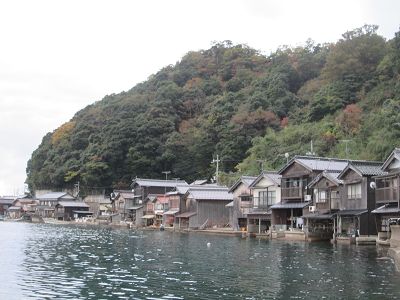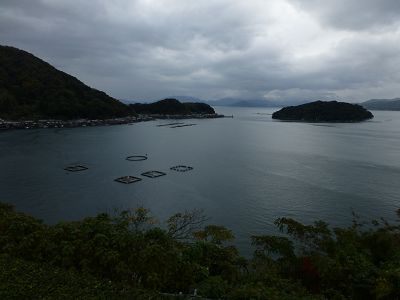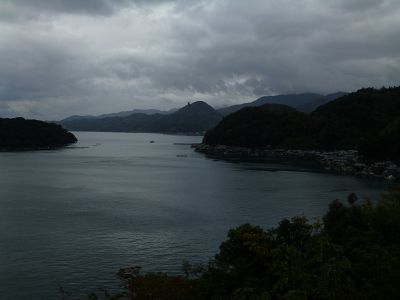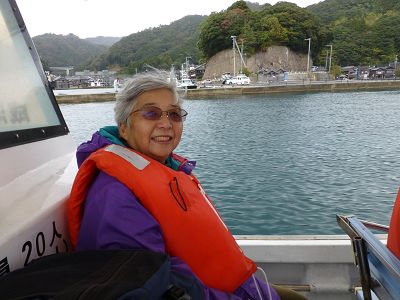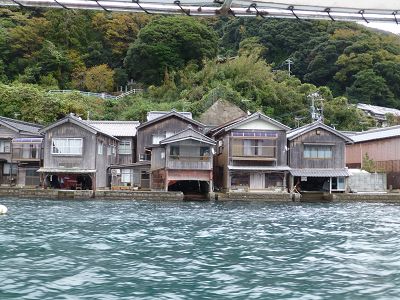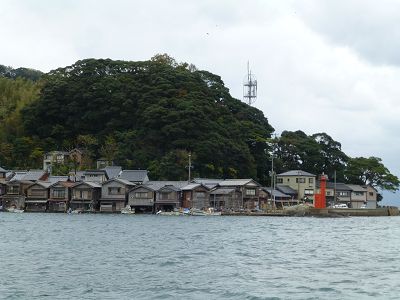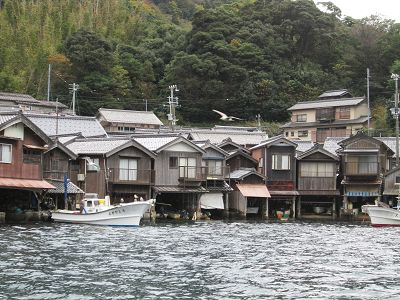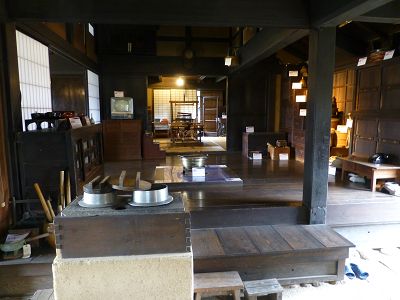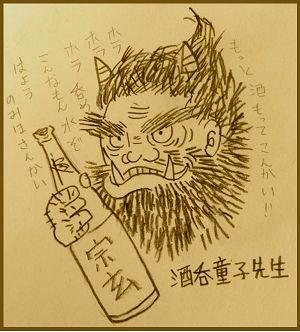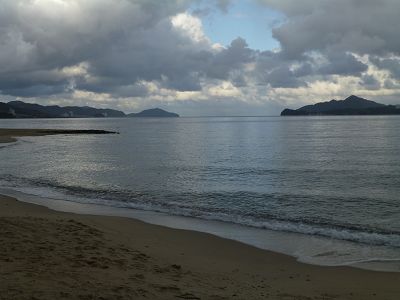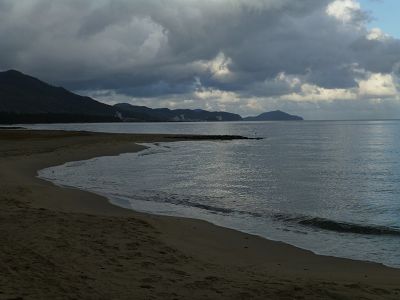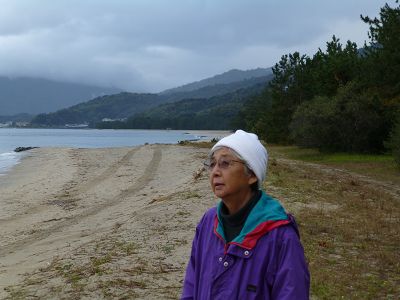|
Tango Region, north Kyoto Prefecture, Nihonkai (Japan Sea)
The Tango Peninsula was a trade route from Eurasian Continent to Kyoto. Fishing and sightseeing are main industries now. | |||
| Tokyo to Ine | Roadside at busstop | Amanohashidate | |
| Ine Village | Tango Kyoodo Shiryokan | Charoku (Tea6) | |
| Overnight at Shibata-soo | Shiryokan: Shuten Doji | "I love these local trains!" | |
| Views from the overlook | Shiryokan: Anju and Zushio | Maizuru Hikiage Kinenkan | |
| More sight-seeing | Tango Kyoodo Shiryokan "Ama" | ||
| Tango Region, Kyoto Prefecture | |||
|
An eight hour train and bus trip.
It has been 36 years since we travelled long hours by successive train and bus to a remote place. It's still fun. I arrived from the U.S. last night, my 24th visit to Nihon. I have conquered jetlag. | ||
|
Located on Wakasa Bay, Ine is famous for wooden fishing houses called "Funaya". It was selected as "Groups of Important Traditional Buildings," a category of Japanese building protection. It was the first fishing village to be designated. In 2008 Ine joined the "Most Beautiful Villages of Japan." Tsutsukawa district and Honjo-Hama district have handed down the Urashima Taro legend.
The unique Ine buildings which have existed since the 1700s were at first storage houses for wooden boats built for hanging up fishing nets. The current funaya were repaired along with the change of the times, the first floor is a combined boat garage and workspace for fishermen, and the second floor is used as a living area. Even now 230 houses stand in a row along the 5km length of the bay. The first funaya that were built were thatched roof wooden houses without a living space on the second floor, created to function as boathouses. At present, most funaya are wooden 2 floor buildings, and the second floor room is used as a guest room, or as living quarters for younger generation family members. There are also funaya which have been renovated as accommodation. The main houses are often found on the mountain side across the road, and this is where the everyday lifestyle is based. In addition to being in co-existence with the sea, Funaya also fulfill functional roles, and can be used for preparation of fish for cooking, making dried fish, and for carrying out fishing work activities while sheltering from wind and rain. Wakasa Bay at Ine has a net tidal variation of less than 50 cm, a hydrological anomaly. This makes possible the "boat garages." Normal tidal variation would of course inundate a whole story if not two. On an ordinary Tuesday in November there are zero rooms available. This place is an extremely popular attraction, mainly with Chinese, Hong Kong and Japanese tourists. I saw very few Caucasians. Everyone wants to stay in the Funiya, the nice guest room into which everyone has converted the upper 9' of the boat garage. | ||
|
Our minshuku, Shibata-soo
| ||
|
Michi no eki Funaya-no-sato
From a new tourist restaurant perched above the town, panoramic views of Ine Village and the bay. | ||
|
More sight-seeing in Ine; boat tour
| ||
|
Good Jizos.
| ||
|
Tango region history and anthropology museum
We were the only visitors to this large museum, possibly the only ones of the whole day. It is old and not fancy, but an important archive of historical materials. Many notes taken(see following) | ||
|
Shuten Doji lives near here!
A famous local myth of which I learned via Anime. | ||
|
The tale of Anju and Zushio (of movie Sansho Daiyuu, "Sansho the Bailiff")
This area is the setting. | ||
|
Exhibit on Ama, "sea woman." In Wakasa Bay they gather abalone, seaweed and shellfish, not pearls, from the seabed. The museum contains samples of their diving clothing and of the metal tools they use to scrape nori from undersea rocks.
Japanese tradition holds that the practice of ama may be 2,000 years old. Traditionally, and even as recently as the 1960s, ama dived wearing only a loincloth. Even in modern times, ama dive without scuba gear or air tanks, making them a traditional sort of free-diver. If you refer to famales as "the weaker sex," a Japanese person will be puzzled. | ||
|
According to the Kojiki, the oldest chronicle of Japan, Izanagi who lived in heaven used to use the Floating Bridge of Heaven to see his sweetheart Izanami who lived on earth. They were the first two humans. But one day, while Izanagi was spending a night with Izanami, the bridge fell down. The sandbar that crosses the bay is the bridge Izanagi used. Or maybe a clever local merchant 1000 years ago declared it so. It has been a tourist attraction for nearly 1000 years.
| ||
|
Our hotel in Miazu
| ||
|
Miazu to Maizuru
We detoured to Maizuru solely to visit the repatriation museum. | ||
|
The Maizuru Repatriation Museum
Noriko believed that her parents had been repatriated to this port from China after Japan's surrender. The next day she learned from her surviving uncle and aunt that they probably returned via Kyushu, not Maizuru. But we were both glad to have visited this place. I knew nothing of this. After World War II there were from 560,000 to 760,000 Japanese personnel in the Soviet Union and Mongolia interned to work in labor camps as POWs. Of them, it is estimated that between 60,000-347,000 died in captivity. At the museum we learn that the total disaspora of Japanese located all over Asia and through eastern Europe was 6.6 million, 9% of the entire Japanese population. Over 95% were civilians who left Japan due to famines and the hardships of the preceding 20 years. After making this significant detour to Maizuru and paying a steep cab fare from station to museum in pouring rain, we found the museum closed. They have a weird custom of closing every third Thursday or something. But some staff were in the building. Noriko ran to the door and begged them to let us in for a while. | ||



